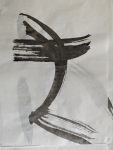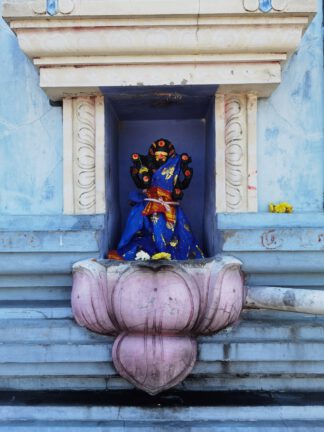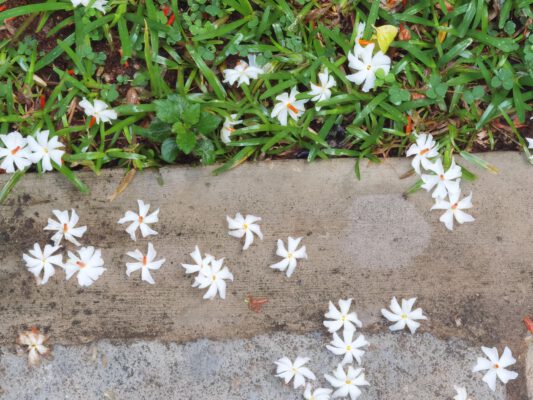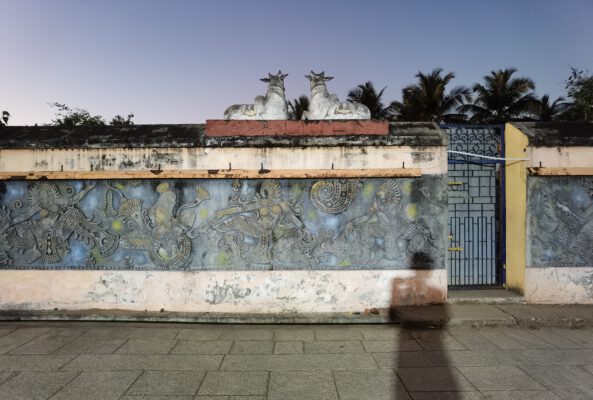Ehere was a time when a Studium Generale was part of the academic world. I did it for a few semesters. The idea of a systematic science always seemed somewhat absurd to me.
In my philosophy studies after the intermediate examination in Heidelberg, I became more systematic, but I was still a 'colorful dog' in the seminar. I always found counterexamples or strange observations that contradicted the theories. That was invigorating for the discussions in the seminars. I was argumentative and didn't give up easily. However, I didn't have much to counter the power of systematic thinking in the tradition of German idealism in the long run, and so I took refuge in aesthetic theory.
Aesthetic theory
Everything that is perceptible is potentially the subject of aesthetic theory. The more colorful, the better. However, here too I was caught up in the systematic and analytical way of thinking. We were reading modern thinkers, not postmodernists. Art history had remarkably little to contribute to the discussions. And so I surrendered to the idea of the avant-garde. A new idea quickly became an old one and was replaced by an even more radical one.
The tragedy of this movement, which is often (mis)understood as progress, is the analytical reduction. Mystical thinking becomes mythical, then enlightened and finally critical thinking. The object of art is reduced from the cosmos to the religious/ideological, then to the scientific and finally to the critical, sometimes cynical. The semiotic reduction was followed by a compositional reduction, then a reduction to the act of perception, a further reduction to the idea (concept). This process of analysis, fragmentation and resynthesis was accelerated by media theory. It was accompanied by the development of printing technology, photography, film, video, computers, AI...
The divisive power of science (scienzia) reduces the act of creativity to finding new elements. The 'ism' of art history: Impressionism, Futurism, Cubism, Symbolism, Dadaism etc... Isolate forces of creativity and radicalize them until they have found an expression.
This brief outline is of course a trivializing, radical abbreviation. Art also became richer through the inclusion of phenomena from the social sciences, psychology and the natural sciences. Inter- and transdisciplinary approaches led artists into laboratories, politics, the streets and activism. Individual forces such as 'the spiritual in art', kinetics, synaesthesia, geometry, emotion, kitsch - all this and much more was concentrated, distilled and mixed.
Thought pictures
To me, the different art movements always seemed to represent different ways of thinking. I really thought that! I thought that the original reason lay in thinking. I shared the idea of the great Western philosophers that philosophical systems are just that: Systems that provide different interpretations of a reality that cannot itself be explained. In other words, the idea that only a representation of the world can be created within thought, but that the world itself is not accessible.
I was therefore always suspicious of the assumption that art is an act of creation, i.e. that it is creative. How could a subject be a creator if it was understood rationally? That sounds naïve, but it is actually only honest. The West talks about 'creative' artists in a materialistically and capitalistically oriented conception of the world in which the sacred, the sacred, the divine has no significant value. The subject is thus stylized as the creator, who is granted a creation that is denied to the divine. It seemed to me that this contradiction could only be resolved one-sidedly. I opted for the rational, which seemed more coherent within Western culture.
Within this way of thinking, art then takes on the role of a representation or perhaps even that of a laboratory where new experiences can be made. In postmodern discourses, the power of art - to be able to reach the world beyond thought through the sublime - is radically expanded. In deconstruction, post-structuralism and the rhizome, the world opens up beyond systematic patterns of thought. The systems are transcended, so to speak (even if the main proponents would probably strongly object to this). In the brutal distortions, the search beyond the signs, in the free combination of the incompatible, something new emerges. This is where I felt at home for the first time. To this day, I find comfort and inspiration in Deleuze's writings.
But only now am I really beginning to see. Because this whole movement of thinking within the rational does not lead very far. The limits of the rational are quickly reached. Then come the warning signs: Beware, this is not scientific, or cannot be justified.
How can thinking and the world be reconciled? This question shows the arrogance of this tradition of thought. The world is faced with a small thinking mind that wants to grasp the entire cosmos with all its fascinations. And the whole thing is only based on itself. It's actually so stupid that I wonder why I didn't see it much earlier. And why did the so-called 'great thinkers' who knew this not say it more prominently, but hide it in little posthumous notes (see Kant and Hume, for example)?
The way out of this dilemma is to take a broader view of our being than simply reducing it to rational thinking. We must allow ourselves to understand ourselves as matter and life, as consciousness and rational mind, as intuitive and spiritual. Only if we allow the complex inner images that interweave these and other levels can we understand ourselves as part of a reality that includes us, and the images that arise there are substantially different. They require a completely different language.
I found the following quote from Aurobindo today:
"A certain difficulty arises for our mind in reconciling these different faces or fronts of the One Self and Spirit, because we are obliged to use abstract conceptions and defining words and ideas for something that is not abstract, something that is spiritually living and intensely real. Our abstractions get fixed into differentiating concepts with sharp lines between them: but the Reality is not of that nature; its aspects are many but shade off into each other. Its truth could only be rendered by ideas and images metaphysical and yet living and concrete, - images which might be taken by the pure Reason as figures and symbols but are more than that and mean more to the intuitive vision and feeling, for they are realities of a dynamic spiritual experience." (The Life Devine p.372)
It seems to me that this is an indication of a different understanding of art. I will look into it.








